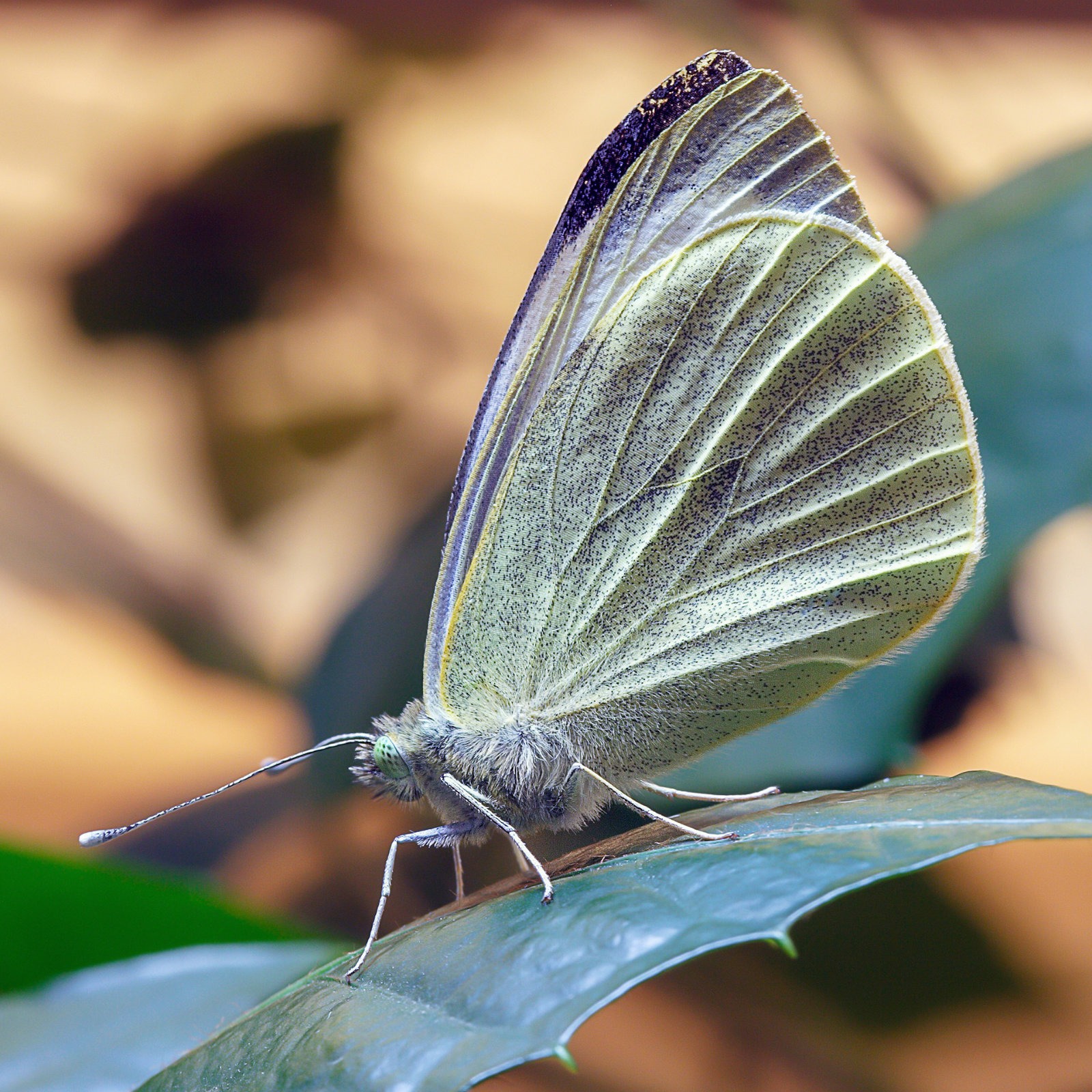As the name suggests, this butterfly is largely white with black tips on the edge of the forewings. Females have two black spots on the upper side of their forewings while the males have just one (both have two on the underside). It is easily confused with the Small White which, aside from being smaller, has a more horizontal black marking on its forewing tips.
Larvae: Its caterpillar is green with black spots and yellow stripes.
Latin name: Pieris brassicae
Size: Up to 63mm wingspan in females and 58mm in males.

Overview
The Large White is a resident species which can be found throughout all areas of the UK. Foreign visitors often fly over from Europe to make their home here, proving that this is a very mobile butterfly. It can be seen on the wing as early as April but is most common throughout May and again in July and August when the two yearly broods emerge. You may also see its eggs between May and September as groups of small yellow balls bunched together on leaf surfaces. Adults will slurp up nectar from a number of plants such as Thistles, Bluebell and Dandelion while the larvae love to chomp through cabbages and flowers like Nasturtium.
In the garden
The larvae of the Large White aren’t very popular in allotments and gardens because of the damage they can do to people’s cabbage crops. For this reason it is often known (along with the Small White) as the ‘Cabbage White’. Pesticides have damaged numbers in recent years, but populations are still strong. The larvae are very resistant to predators because of a build up of poisonous oils in their body which make them not very tasty at all! Crunchy cruciferous vegetables such as cabbages or brussels sprouts will allow the larvae to flourish and adults will in turn gather in the vicinity of these plants in order to breed. As long as you have plenty of flowers in your garden, you should see many of these butterflies throughout the spring and summer.